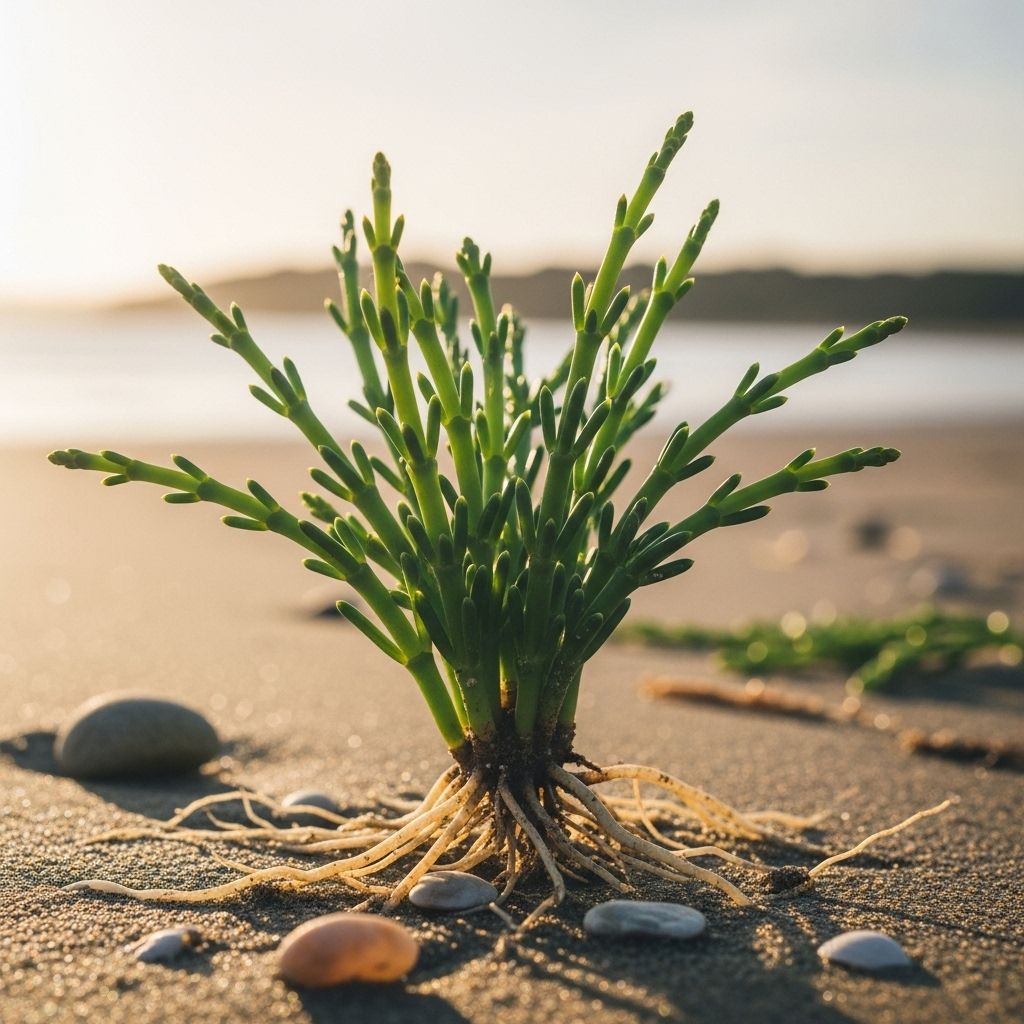Sea Bean: Unveiling Benefits, Uses, and Taste
Coastal succulents add briny crunch and nutrient bite to flavorful dishes.

Table of Contents
- Introduction
- What Is Sea Bean?
- Seasons and Availability
- Nutritional Value
- Taste and Culinary Uses
- Foraging and Harvesting
- Benefits and Importance
- Frequently Asked Questions
Introduction
Sea Beans, part of the Salicornia genus, are a fascinating foraging find that offers a unique blend of taste and nutritional benefits. Commonly known by various names such as Samphire, Glasswort, and Pickleweed, these succulent plants thrive in coastal environments and are prized for their use in both raw and cooked dishes. This article delves into the world of Sea Beans, exploring their characteristics, nutritional value, culinary applications, and ecological importance.
What Is Sea Bean?
Sea Beans are succulent plants belonging to the Amaranthaceae family. They grow in dense, branching clusters with smooth, fleshy stems that are typically harvested when they reach 2 to 6 centimeters in length. The name Salicornia translates to “salt horn,” reflecting their unique shape and salty taste. These plants are halophytes, capable of growing in high salinity environments, making them ideal for coastal habitats and salt marshes.
Seasons and Availability
Sea Beans are available from late spring through summer, with their appearance changing as the seasons progress. Initially bright green, they transition into red, brown, and purple hues as the weather cools. They are widely distributed across the globe, with different species known by various regional names.
Nutritional Value
Sea Beans are a nutritional powerhouse, providing essential nutrients like protein, calcium, vitamin A, and potassium. They also contain iron, magnesium, copper, fiber, iodine, and riboflavin. The plants absorb beneficial ionic minerals from the saltwater environment, contributing to their unique taste and nutritional profile.
Taste and Culinary Uses
Sea Beans have a distinctively salty, briny flavor, similar to seaweed but without the fishy taste. This makes them a versatile ingredient in both raw and cooked preparations. They pair well with seafood, adding a savory crunch to dishes like pasta salads and seafood beds. When cooked, they develop a milder flavor reminiscent of green beans or asparagus.
Foraging and Harvesting
Foraging for Sea Beans requires care to avoid damaging the plant. Harvesting should focus on the top green parts, leaving the roots intact to allow the plant to regrow. It is essential to check local regulations and ensure sustainable harvesting practices to preserve wild populations.
Benefits and Importance
Beyond their culinary appeal, Sea Beans play a crucial ecological role. They help balance salt levels in their environment, supporting the survival of other species. This unique adaptation makes them vital components of coastal ecosystems.
Frequently Asked Questions
Q: What is the nutritional profile of Sea Beans?
A: Sea Beans are rich in protein, calcium, vitamin A, potassium, iron, magnesium, and other essential nutrients like copper and iodine.
Q: How do I prepare Sea Beans for cooking?
A: They can be sautéed in olive oil or butter, often with garlic or shallots, and added to various dishes for a briny flavor.
Q: Are Sea Beans good for health?
A: Yes, aside from their nutritional benefits, Sea Beans contain phytochemicals like trans ferulic acid, which may help in reversing age-related damage.
Q: Where can I find Sea Beans?
A: They are commonly found in coastal areas, salt marshes, and mud flats worldwide, though availability may vary by season.
Q: How do I harvest Sea Beans sustainably?
A: Harvest only the top parts, leaving the roots intact, and ensure you adhere to local foraging regulations to preserve ecosystems.
References
- https://specialtyproduce.com/produce/Sea_Beans_735.php
- https://ediblecapecod.ediblecommunities.com/about-us/about-us-eating-wild-sea-bean-briny-delight/
- https://www.swflshellguide.com/post/what-is-a-sea-bean
- https://daniellesdives.wordpress.com/2012/06/18/what-the-heck-is-a-sea-bean/
- https://www.merriam-webster.com/dictionary/sea%20bean
- http://wyattsailing.blogspot.com/2013/12/whats-sea-bean.html
- https://tpwd.texas.gov/publications/nonpwdpubs/young_naturalist/plants/sea_beans/
Read full bio of medha deb












